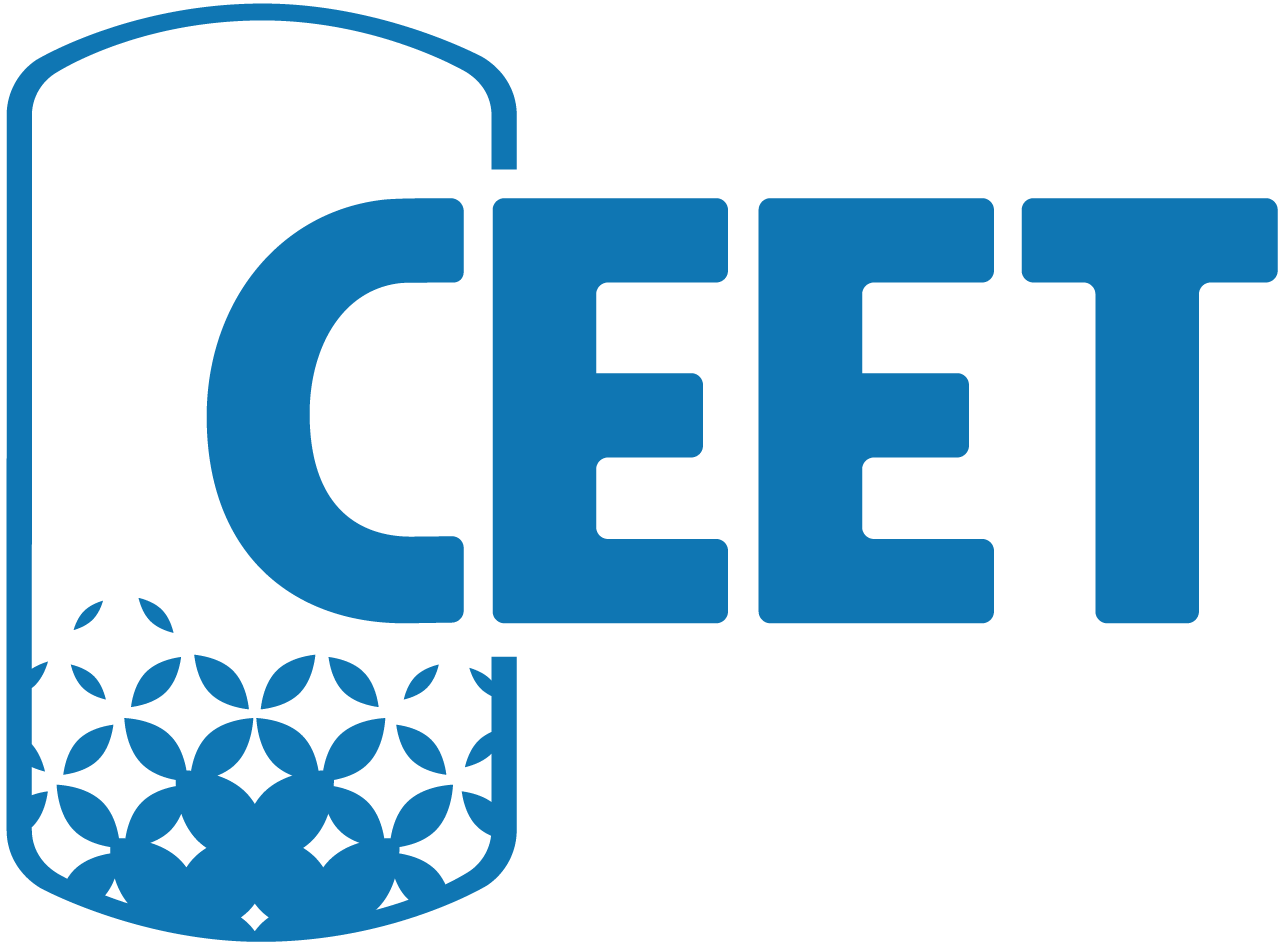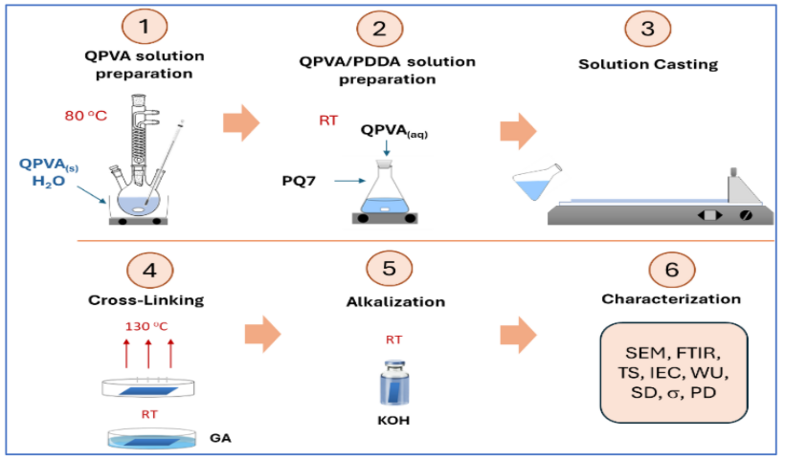Asep Muhamad Samsudin, Nur Rokhati, Nor Basid Adiwibawa Prasetya, Andri Cahyo Kumoro, Didi Dwi Anggoro, Kharissa Nasher, Dhiky Wahyudi, Michaela Roschger, and Viktor Hacker
Alkaline Polymer Electrolyte Fuel Cells (APEFCs) have emerged as a promising candidate for clean energy production. Anion exchange membrane (AEM) is an essential element of alkaline polymer electrolyte fuel cells for its role in facilitating hydroxide ion conduction. The objective of this study is to investigate the effect of a glutaraldehyde-based crosslinker solution on the performance of anion exchange membranes (AEMs) fabricated using quaternary ammonium poly (vinyl alcohol) (QPVA) as the backbone polymer and polyquaternium-7 as the second polymer. The introduction of a glutaraldehyde-based crosslinking agent was purposed to enhance membrane stability and reduce excessive swelling. The study evaluates the impact of varying glutaraldehyde concentrations on membrane performance. FTIR analysis confirms the presence of key functional groups of QPVA, polyquaternium-7, and the crosslinking agent. SEM images reveal that the membranes demonstrate dense and homogeneous physical structure. The results show that water uptake, swelling degree, ion exchange capacity (IEC), and hydroxide conductivity are influenced by the concentration of the glutaraldehyde solution. The QP-GA-13 AEM exhibited the best overall performance, achieving the highest tensile strength of 31.1 MPa and the highest hydroxide ion conductivity of 4.15 mS cm-1 at 70°C. In single-cell tests, this membrane delivered a maximum power density of 85 mW cm-2 and a current density of 350 mA cm-2 at 80°C under humidified oxygen conditions.
International Journal of Renewable Energy Development
DOI: 10.61435/ijred.2025.60897

